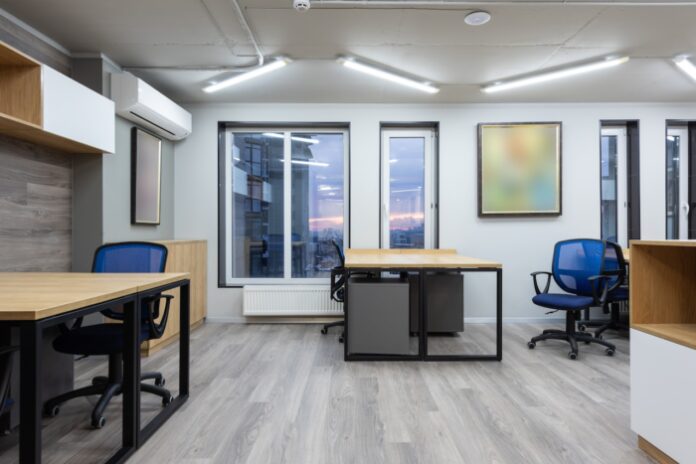Any technology that boosts performance, reduces costs, and elevates a company’s brand value in the marketplace is something that cannot be ignored. LED lighting brings all of those benefits and more to companies operating in commercial and industrial spaces. It’s a transformative technology that is becoming the standard for companies focused on creating safe, flexible, and highly functional workspaces.
“LED lighting is a breakthrough technology that brings many benefits to the business world,” says Dara Greaney, Founder and CEO of LEDLightExpert.com. “With minimal investment, it drives innovative lighting solutions that enhance functionality, increase productivity, and support sustainability for commercial and industrial spaces.”
LEDLightExpert.com brings a unique mix of expertise and innovation to clients in commercial and industrial spaces looking for a better lighting strategy. Its services include comprehensive lighting studies, fast and affordable access to quality LED products, and elite customer service on all issues related to LEDs.
“The future of lighting is LED,” Greaney says. “It transforms spaces, elevating the workplace experience and cutting back on operational costs. LEDs are one of the smartest investments companies can make in their facilities and overall business performance.”
The basics of LED lighting
LED lighting uses light-emitting diodes to convert electrical energy to light, providing light that is cooler, less costly, and more controllable than traditional incandescent and fluorescent bulbs. While LEDs were created over 60 years ago, they have recently become the go-to solution for lighting as global initiatives have sought to increase sustainability in the business world and beyond.
Leveraging LEDs to slash operating costs
“The US Department of Energy reports lighting accounts for as much as 20% of commercial electricity costs,” Greaney shares. “LEDs dramatically impact those costs, providing even better lighting than traditional bulbs while using 90% less energy.”
Uni-directional light is one of the keys to the energy savings LEDs provide. Whereas incandescent and fluorescent bulbs throw off light and heat in all directions, LEDs provide a focused beam that wastes less energy.
The uni-directionality of LEDs also allows for a more functional lighting design, as LED fixtures can be easily focused within workspaces to provide the optimal quality and quantity of light.
LEDs also emit much less heat than incandescent and fluorescent bulbs, which saves energy both in the powering of the bulb and in cooling costs.
Replacement costs are another area where LEDs save businesses money. By providing as much as 35,000 hours of light, LEDs achieve a life span four times longer than fluorescent bulbs and 35 times longer than incandescent bulbs.
“In most commercial spaces, lights are used a maximum of 10 hours a day,” Greaney shares. “At that rate, LED bulbs can last for nearly 10 years. Fluorescents used in the same setting will need to be replaced after two to three years, and incandescents won’t last longer than three to four months.”
Boosting workplace performance with LEDs
“The quality of light businesses provide for their workers plays a significant role in improving their productivity,” Greaney explains. “When employees are able to work in a well-lit environment, they find it easier to concentrate, are more alert, and their mood is better. For businesses, that translates into better productivity and higher profits.”
To enhance lighting innovation, incorporating high Color Rendering Index (CRI) elements like full spectrum LED strip lights can significantly improve color accuracy and visual clarity in commercial environments.
The technology behind LEDs allows for the color temperature of bulbs to be adjusted, which is something that cannot be achieved with traditional bulbs. The same bulb that provides a blue light to boost alertness in work areas can also be adjusted to deliver warmer colors to promote relaxation.
High color rendering is another feature of LEDs that makes them an optimal light source for workspaces. By providing a more accurate representation of colors, LEDs support tasks that require color matching while also reducing eye strain.
“LEDs also enhance safety in the workplace,” Greaney shares. “Because they need to be replaced far less often than traditional bulbs, they keep maintenance teams from the hazardous work that often needs to be done to replace bulbs in commercial and industrial settings.”
Increasing sustainability with LEDs
LEDs are seen as a key player in sustainability efforts, reducing greenhouse gas production by reducing the amount of energy needed to provide lighting.
“Switching to LEDs is one of the easiest and most impactful steps any business can take to support its sustainability efforts,” Greaney says. “It reduces a company’s carbon footprint, cuts back on waste, and keeps dangerous chemicals like mercury that is found in fluorescents out of the environment.”
As companies prioritize sustainability, they also improve their brand reputation. Reports show today’s consumers consider the efforts brands are making in the area of sustainability and are more likely to support those with a good record of implementing sustainable practices and products.
The transformation LED technology brings to commercial and industrial spaces goes far beyond simply providing better lighting. Businesses that invest in LEDs will get a return that includes lower operating costs, increased sustainability, and better workforce performance.
Find a Home-Based Business to Start-Up >>> Hundreds of Business Listings.

















































